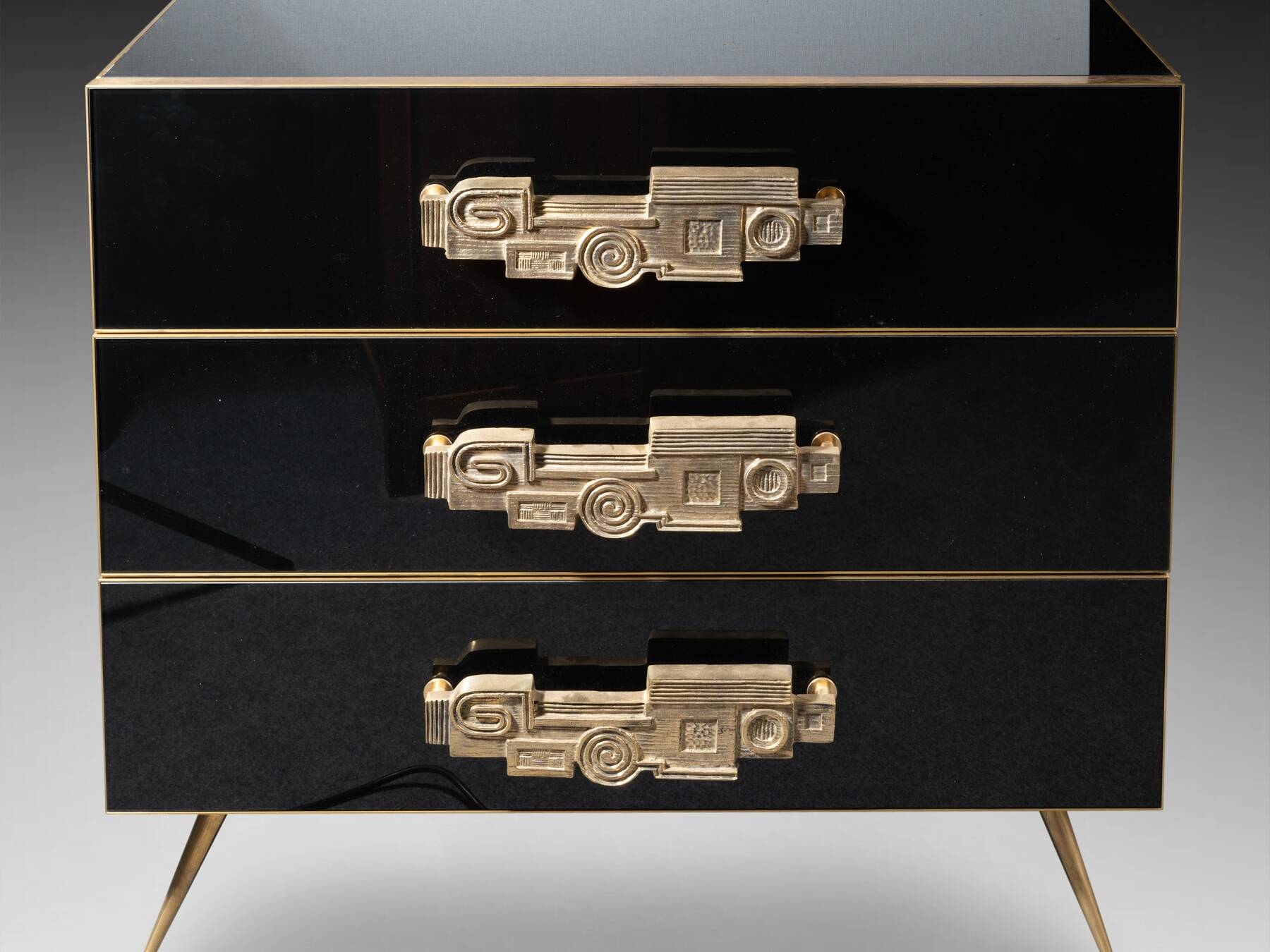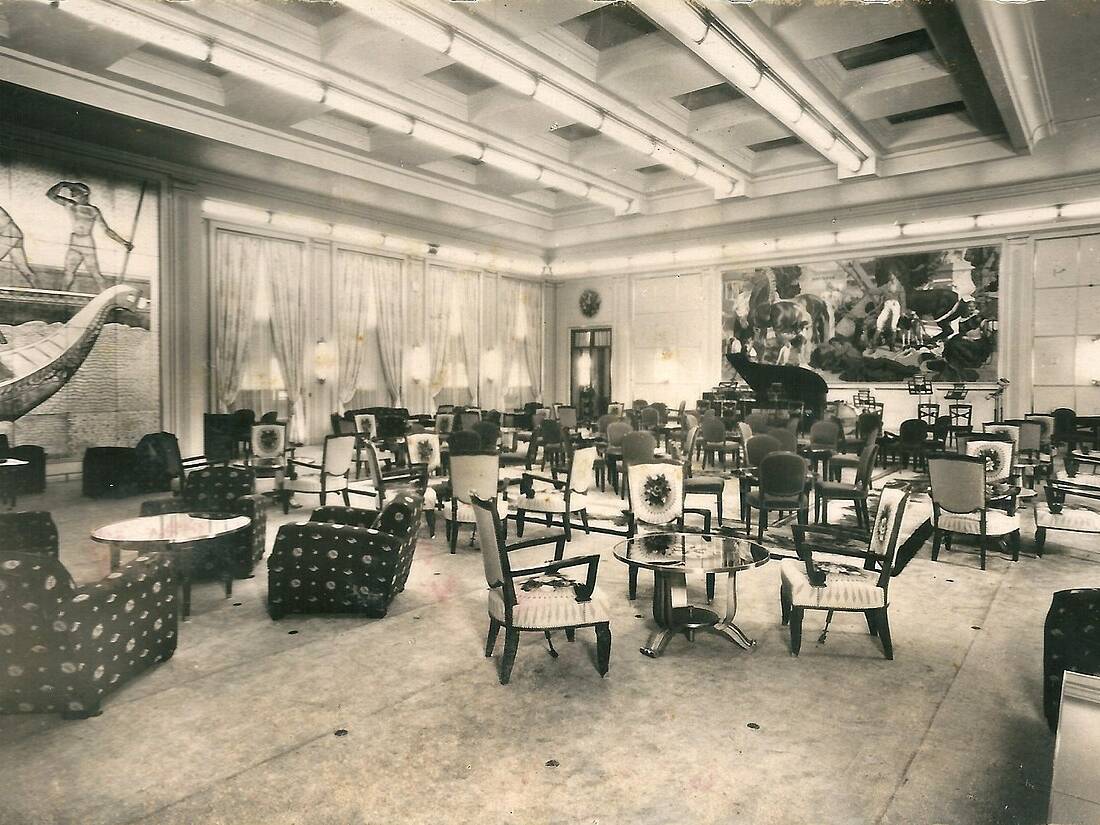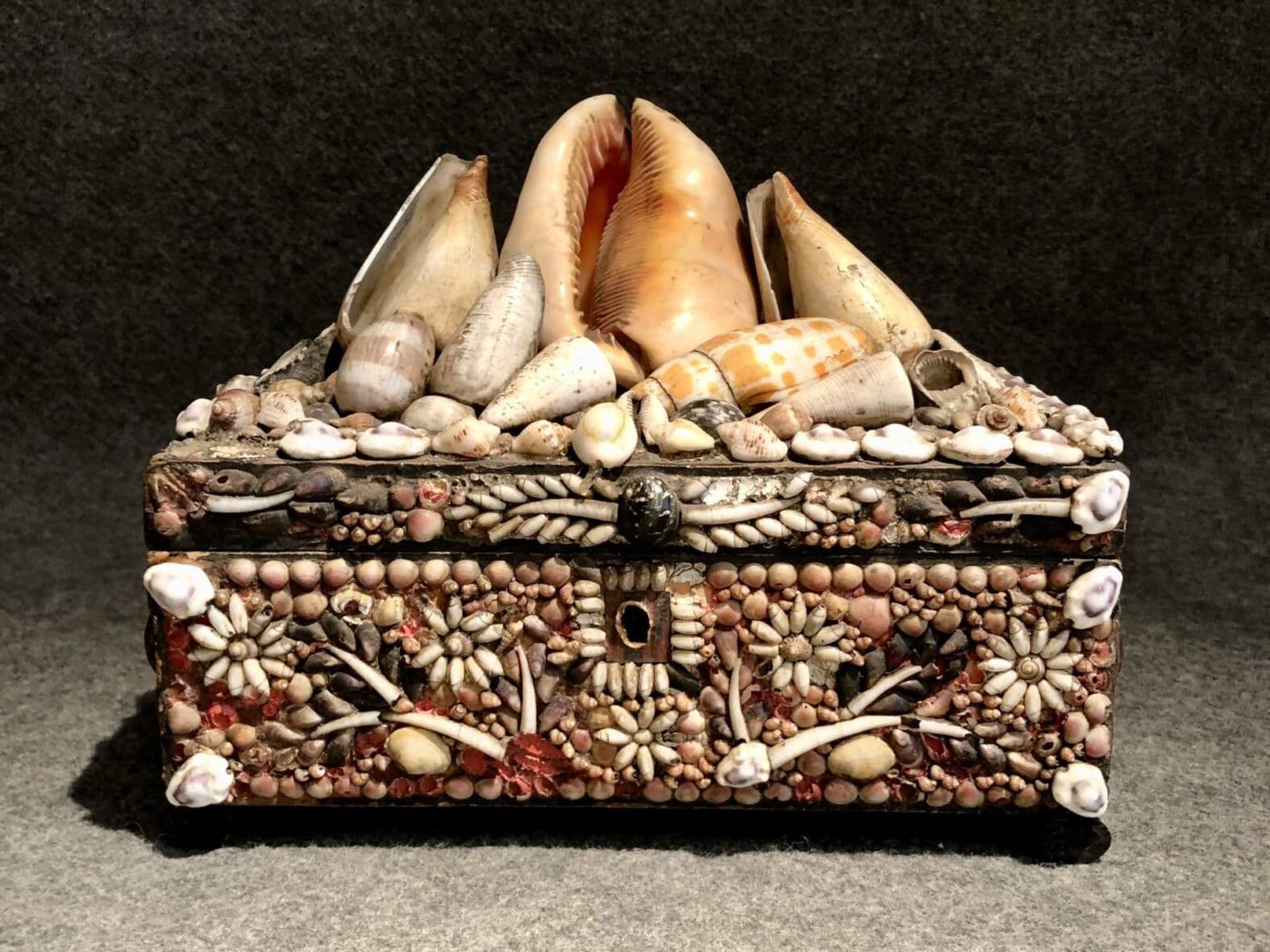Middle-Ages Furniture: Rarity, Craftsmanship, and Authenticity
Few possess the knowledge and insight required to fully grasp the historical intricacies of this extensive era, which spans nearly four centuries. It is a time marked by complex dynasties, shifting borders, dynamic exchanges, and richly layered artistic styles. From the 13th century to the early 17th century, furniture evolved from being genuinely mobile to progressively settling into more permanent forms. Drawing from diverse influences, it expressed remarkable creativity across a wide range of crafts.
Furniture from this period is exceedingly rare, and consequently highly coveted by discerning collectors and connoisseurs alike. Rarity inevitably invites imitation; thus, any prospective buyer of High-Epoque furniture must be meticulous in verifying the authenticity of a piece, and, if necessary, should enlist the guidance of a qualified expert with the requisite expertise in medieval acquisitions.
The Most Coveted Pieces of Middle-Ages Furniture
Naturally, certain items are more sought after than others—and also more frequently encountered. When evaluating the quality of antique furniture, one must consider the customs and cultural practices of the era, including those specific to its many sub-periods.
Chests: Utility Meets Prestige
Used for storage, transport, and even as seating, chests are emblematic of High-Epoque furniture. Whether sober or richly adorned, they serve as tangible expressions of their owner’s social standing and the period of their creation. From simple folded drapery motifs to the elaborate scrolls of acanthus leaves, grotesques, and zoomorphic heads beloved during the Renaissance—not to mention religious iconography—chests appear in all shapes and sizes: for storing weapons, garments, liturgical items, or as marriage gifts. Typically fashioned from native woods, they may feature elaborate ironwork and finely crafted locks.
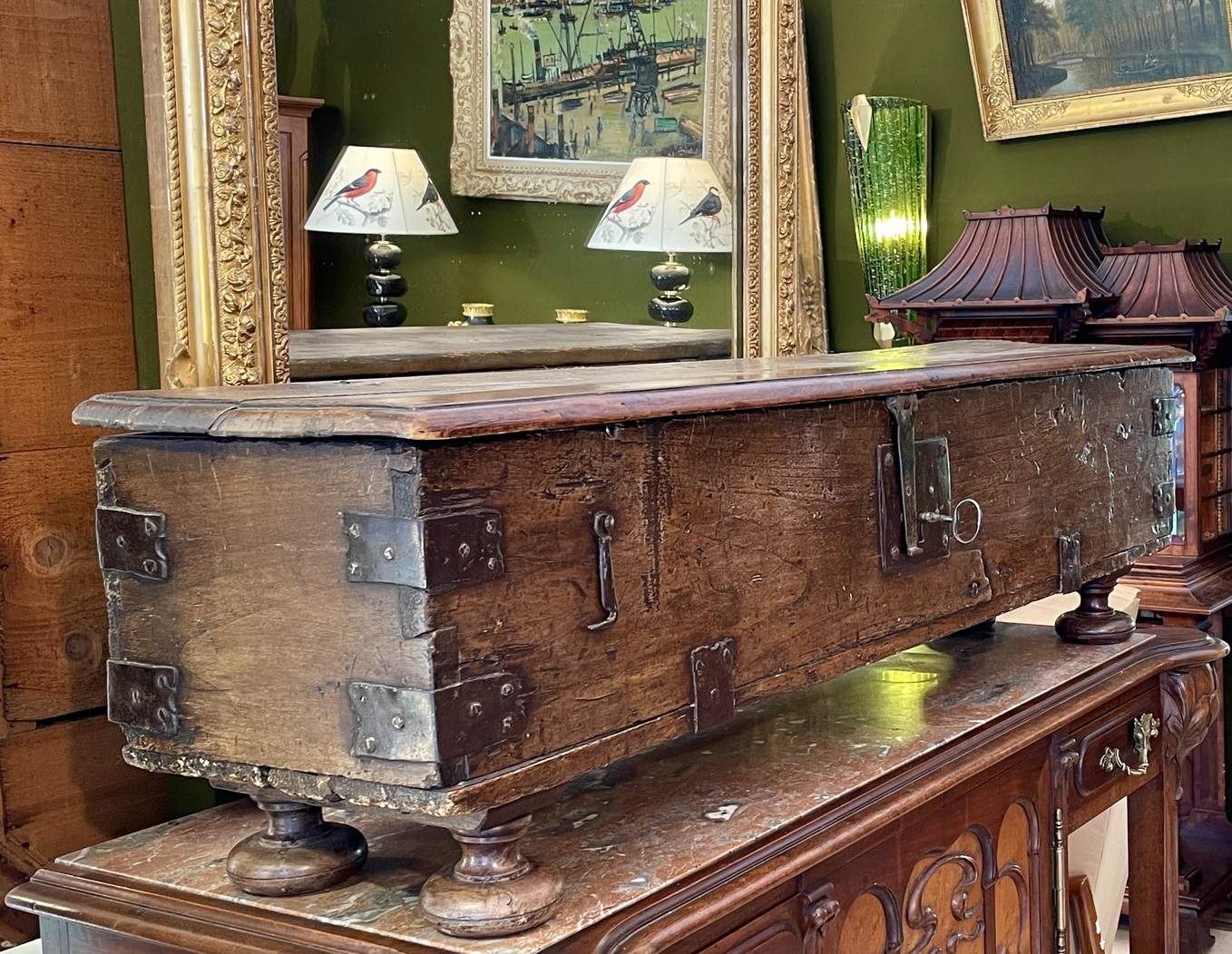
Dressers and Credenzas: Displays of Power
Predecessors of the grand double-bodied cupboards of the Ancien Régime, these prestigious High-Epoque furnishings—complete with pediments, columns, and historiated decoration—are highly sought after on the art market. Reserved primarily for the aristocracy and the Church, such costly pieces were designed to showcase precious objects, particularly items of silver and gold.

Bench-Chests and High-Back Chairs: Graceful Grandeur
Characteristic of the great halls in noble residences, these pieces combine practical function with ornamental display. Often tastefully embellished with fashionable motifs, heraldic emblems, or biblical scenes, they exhibit a rich iconographic language. The scenes depicted frequently allow scholars to situate the furniture within its original context of use.

Medieval Tables: Strength and Rarity
Treasure troves of historical charm, trestle tables and those with turned legs—particularly from monastic communities—are prized for their timeless presence and unique patina. Whether grand and imposing or of modest dimensions, these robust tables bear the passage of time with grace, imbuing their surroundings with an unmatched sense of character.
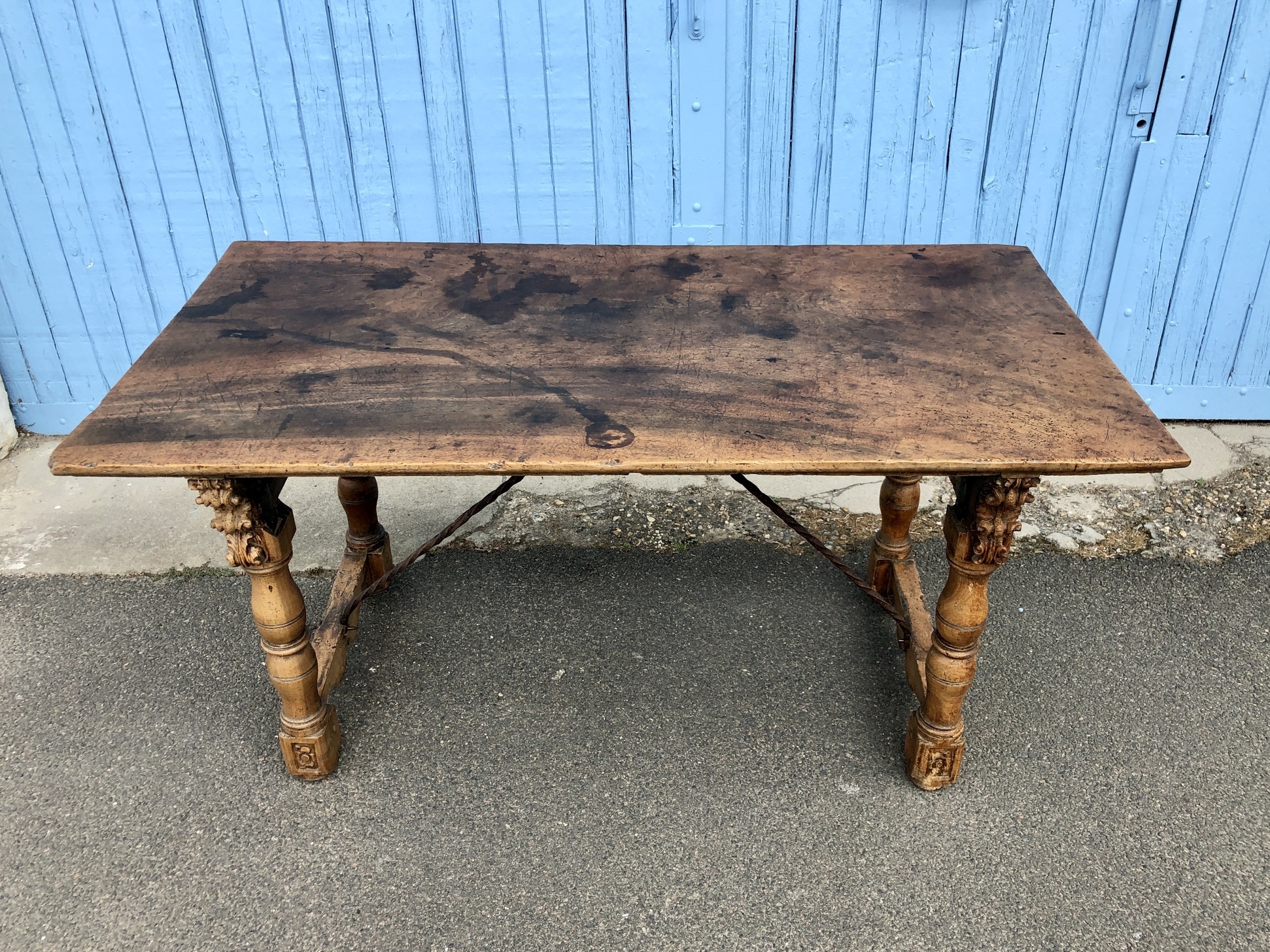
A Market Driven by Informed Collectors
Collectors of High-Epoque furniture often prioritise pieces with original patina and minimal restoration. At prestigious auction houses and fairs such as TEFAF Maastricht or the Fine Arts Biennale (FAB), exceptional examples frequently command prices in the tens of thousands of euros. Provenance, condition, and authenticity are essential in determining value. Furthermore, a renewed interest in ancient art, especially among younger collectors, has invigorated the market—allowing them to break the monotony of modern interiors with historically rich furnishings.
How to Identify an Authentic Piece
Without the support of a seasoned professional, caution is advised in a market where 19th-century reproductions and pastiches abound. Several key indicators should be considered:
-
Joinery: Dovetail joints, wooden pegs, mortise and tenon fittings—executed without industrial glue—are hallmarks of genuine High-Epoque craftsmanship. Tool marks, knowledge of period-appropriate woodworking techniques, and the types of wood used are subtle indicators that only experience and study can decipher. Consulting a specialist in antique furniture is strongly recommended.
-
Patina: Wear should be consistent with use. Overly uniform finishes are often suspect. Stains and signs of wear must appear natural and coherent with the item’s function and age.
-
Metalwork: Nails should be hand-forged; locks are typically wrought iron; hinges must be of the period.
-
Provenance: Documented provenance—via old inventories or historical catalogues—offers valuable assurance and helps newer collectors make secure acquisitions. However, expert verification remains indispensable. In the case of major purchases, recourse to a certified expert or laboratory testing (such as dendrochronological analysis) is advisable.
Where to Admire High-Epoque Furniture in France
France boasts an array of museums that house exceptional High-Epoque furniture collections.
-
The Musée national de la Renaissance at the Château d’Écouen preserves a number of major pieces, including sculpted credenzas, decorated chests, and ceremonial seating.
-
The Musée de Cluny, France’s national museum of the Middle Ages in Paris, offers an immersive look into medieval material culture through a wide-ranging display of civil and religious furniture, remarkable artworks, and everyday objects.
-
The Musée des Arts Décoratifs, also in Paris, maintains noteworthy furniture ensembles from the period.
Beyond the capital, the châteaux museums of Blois and Pierrefonds, as well as the diocesan museums of Autun, Tulle, and Narbonne, provide opportunities to discover lesser-known treasures of outstanding quality. These institutions play a vital role in the preservation, study, and dissemination of this artistic heritage. Curators, keen to enrich and enhance public collections, keep a close watch on the art market and regularly acquire remarkable pieces on behalf of the state—prized for their quality, provenance, and historical significance.
Private individuals seeking to acquire a piece of High-Epoque furniture are thus encouraged to contribute to the living legacy of this heritage by caring for it respectfully. Coarse, unnecessary, and damaging restorations should be avoided in favour of preserving the material and memory of the work. In doing so, today’s collectors take their place in the centuries-old lineage of those who have cherished and safeguarded these enduring testaments to human ingenuity.

Autres ressources et documentations
28 June 2025
Plaster Sculptures, Plaster Casts
For a long time, plaster casts suffered from a poor reputation. Often regarded as crude replicas, and sometimes even dismissed as inexpensive imitations, they nonetheless had…
18 March 2025
Murano Glass Furniture
Since the beginning of the 20th century, Murano glassmakers have been exploring new horizons. After classic lighting and decorative art, Murano glass is now used to adorn…
16 December 2024
A bronze triton after the sculptures of François Girardon (1628 – 1715) in Versailles
This fountain element is all the more admirable as it is sculpted after the masterpieces of the Pyramid Basin, on the parterre of the North Wing of the Versailles gardens.
18 November 2024
Tyco Bookcase, by Manfredo Massironi, for Nikol International
A pure creation of optical art research in the 1960s, the Tyco library shelf designed by Manfredo Massironi invites the viewer to bring the work of art to life on a daily basis.
3 August 2024
The Ocean Liner Style
In the 20th century, the immense ocean liners connecting the Old Continent and the New World were ambassadors of tastes and innovations on both sides of the Atlantic.
15 July 2024
An 18th Century Shell Box
From the Regency to the death of Louis XV, the art of the shell was the center of all attention.



